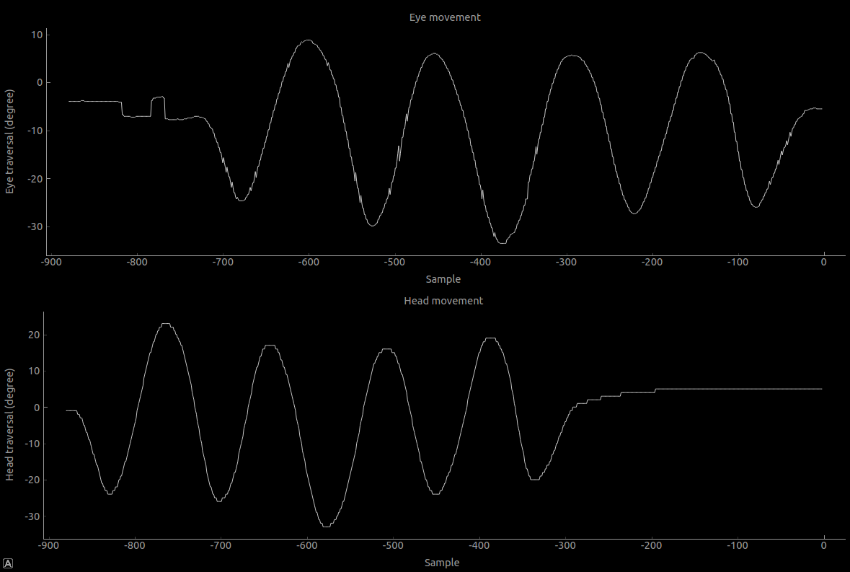Eye-tracking Device
This is a project aiming to develop a system capable of detecting the movement of the human eye-ball and extracting useful information such as the range of eye-ball movement, movement speed, head movement range, speed and frequency, etc.
Such information will be useful in the field of medicine, where certain ailments of the eye can be diagnosed, monitored and rehabilitated. In particular, one of the eye disorders this project has focused on is the Vestibular Ocular Reflex (VOR) disorder. The VOR is a compensatory ocular movement of the visual system to counter head movement and retain fixation. With normal VOR, one will be able to have clear vision of objects during the momentary head motion. When one’s eyes fail to do so, there will be uncorrelated head and eye position observed and transmitted to the brain. This occurrence is detrimental in the daily life of patients suffering from abnormal VOR as they may suffer from severe dizziness and nausea even when carrying out daily activities, i.e. walking or driving. Additionally, VOR dysfunction is prevalent in individuals who have suffered from head trauma and the elderly, causing reduced quality of living due to increased VOR dysfunction induced dizziness and falls. Hence, it is the aim of the project to enable proper detection and rehabilitation of VOR dysfunction to improve the quality of life of the VOR patients.
The detection methodology includes having the patients performing rotational head movement to elicit a nystagmus response that medical practitioners will further analyze. Therefore, a reliable and accessible VOR dysfunction detection system is vital to assist medical practitioners to prescribe the suitable rehabilitative treatment and track the patients’ improvement over time.

The project has been undertaken by different teams and individuals since early 2013. In the early stage, a preliminary system was developed to enable the sensors to be mounted on the human head and the capabilities of detecting eye-slips and head movement were demonstrated. Subsequently, the sensors integration was further improved and the algorithm further worked on to obtain the VOR parameters.
This project has won the GEM (Ground-breaking, Effective and Momentous) award at the 7th Singhealth Allied Health Innovative Practice (AHIP) Award in 2014.
Contact Person: Soh Eng Keng
Email: engsek@nus.edu.sg
Tel: 66012290

